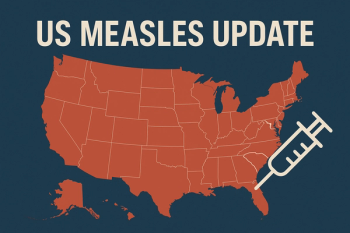
New Insight on IMI-REL Versus IMI+CST Renal Safety
RESTORE-IMI 1 showed a safety difference IMI-REL and IMI+CST when it comes to nephrotoxicity. The team behind a new retrospective study has applied acute kidney injury assessments to the results.
In July 2019, the US Food and Drug Administration announced the
In a multicenter, randomized, double-blind, comparator-controlled phase 3 trial,
>>Check out:
While differences in nephrotoxicity favorable to IMI-REL were observed between the 2 treatment arms, there is no standard definition of nephrotoxicity used in clinical trials.
In light of this deficit, the investigators of a new retrospective study, published in
The retrospective evaluation used 2 acute kidney injury assessment criteria, Kidney Disease Improving Global Outcomes [KDIGO] and Risk, Injury, Failure, Loss, and End-stage Kidney Disease [RIFLE]. The study team also examined the time to onset of protocol-defined nephrotoxicity and the incidence of renal adverse events.
Out of 47 participants, 45 had adequate data to assess nephrotoxicity. Of these participants, 29 were in the IMI-REL group and 16 were in the IMI+CST group.
Under KDIGO criteria, no participants in the IMI-REL experienced stage 3 acute kidney injury. In comparison, 31.3% of the IMI+CST treated participants experienced stage 3 acute kidney injury, according to KDIGO.
Similarly, none of the IMI-REL group participants experienced renal failure by RIFLE criteria versus 25% for IMI+CST.
Overall, time to onset of nephrotoxicity varied considerably from 2 to 22 days.
In the IMI-REL group, 12.9% of patients experienced renal adverse events compared with 37.5% of patients in the IMI+CST treatment arm. The IMI-REL group experienced no discontinuations due to drug-related renal adverse events, compared with 12.5% of patients discontinuing treatment in the IMI+CST group.
The study authors noted that their findings were consistent with a pattern when it comes to colistin relative to newer antibacterial agents.
“As in RESTORE-IMI 1, recent clinical studies of other new antibacterial agents compared with colistin-based therapy have suggested that colistin has a higher rate of nephrotoxicity than these newer therapies. The consistency of this observation across recent clinical trials is notable for clinicians managing complex infections,” the study team wrote.
Newsletter
Stay ahead of emerging infectious disease threats with expert insights and breaking research. Subscribe now to get updates delivered straight to your inbox.






















































































































































































































































































